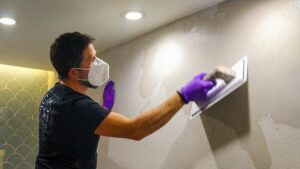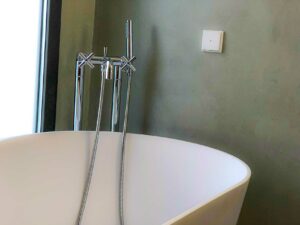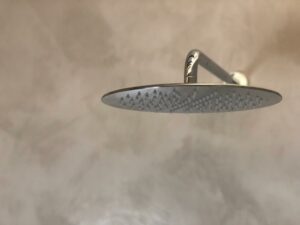
Surface Treatment for applying Microcement
Preparation of the Substrate for the Microcement Types of Substrates to Apply Microcement MICROCEMENT SUBSTRATE – One of the great advantages that microcement has compared
Microcement is a versatile and modern cladding material that has gained popularity in the world of interior design and construction. If you are considering using microcement in your project or are simply interested in learning more about it, this FAQ guide is designed to provide you with answers to the most common concerns related to this material.

Microcement is a coating composed of a mixture of cement in some types, polymers and other additives. It is applied in thin layers on existing surfaces, creating a smooth and continuous appearance.
Microcement can be applied to floors, walls, ceilings, countertops and even furniture. Its versatility makes it suitable for a wide variety of applications.
Microcement stands out for its versatility, durability and uniform appearance without visible joints. In addition, it is easier to maintain than some traditional materials such as tiles.
Microcement is applied without visible joints. This results in a continuous surface without visual obstacles, which is an aesthetic advantage compared to tiles.
Microcement is resistant to scratches and abrasions, making it durable in high-traffic areas. Its durability is comparable or even superior to other coatings.
Yes, microcement is water resistant and is commonly used in bathrooms, kitchens and wet areas. However, it is recommended to apply a sealer for additional protection.
Maintenance is simple. Cleaning with water and neutral soap is recommended. Avoid aggressive chemicals that may damage the sealant.
Yes, microcement is available in a wide range of colours and can have matt or glossy finishes. This allows for complete customization according to your aesthetic preferences.
Not necessarily. Microcement can be applied directly to existing surfaces, as long as they are in good condition and properly prepared.
Microcement application can be a complex process that requires skill and experience. Hiring trained professionals is recommended to ensure an optimal result.
In summary, microcement is a versatile and attractive option for surface coating in a wide variety of applications. If you have further questions or need specific advice for your project, do not hesitate to contact a microcement professional for personalized guidance. This modern material can transform your spaces with elegance and durability.
To learn more about the world of seamless coatings, visit our Lunik website.

Preparation of the Substrate for the Microcement Types of Substrates to Apply Microcement MICROCEMENT SUBSTRATE – One of the great advantages that microcement has compared

Microcement and Plasterboard Plasterboard and Microcement: Great Result PLASTERBOARD AND MICROCEMENT – Plasterboard, a widely used material in construction, has gained popularity in recent decades

Microcement and Moisture Humidity and Microcement: Ensuring a Perfect Application MOISTURE AND MICROCEMENT – Humidity is one of the primary challenges when applying microcement. While